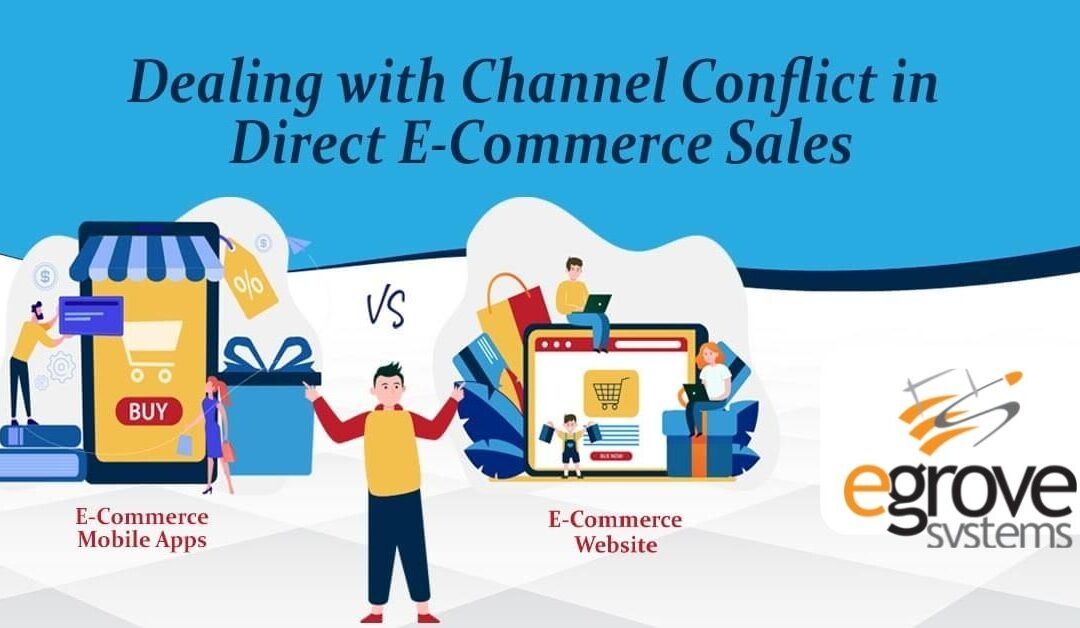As technology and logistics improve, manufacturers have more opportunities to sell their products outside of the traditional relationship with retailers. With eCommerce, customers can order directly from the retailer’s supplier instead of buying from the retailer. Streamlining an elaborate supply chain can offer advantages to both the end user of the product and the manufacturer. However, this can have a variety of negative effects due to disrupting the normal manufacturer-seller relationship. This is known as channel conflict. There are several issues that can be caused by channel conflict, and businesses that are considering direct-to-consumer sales should be aware of how the change in business model can hurt their business and how to best avoid these pitfalls.
What Channels Can Be Used to Distribute Products?
There are several ways that businesses can distribute their products to the consumer directly or indirectly. Retail partners can expand your reach in terms of geographic coverage and exposure to a new customer base, enabling you to sell a much higher quantity of products without needing to handle inventory and marketing on your own.
Having a physical storefront for your own products is one option; customers can visit and buy your goods directly. Customers don’t need to figure out which stores stock your products or wait for shipping, and they can get a hands-on look at the full selection of products. However, the reach of physical stores is limited, especially if the company can only operate them near their base of operations.
eCommerce enables you to sell products to consumers with far less investment than physical stores. It’s easier than ever to set up an online store and eCommerce mobile app to list products, manage inventory, and fulfill orders. Alternately, selling on marketplaces such as Amazon or eBay is another approach to eCommerce that doesn’t require the company to operate their own online sales platform and exposes its products to a far wider audience.
What is Channel Conflict?
If a business traditionally distributes their products to be sold at retail or by dealers, starting to sell online will cause channel conflict by threatening the role of the retailer and/or distributors who would normally be involved. The manufacturer and the retailer will end up competing for sales, which can hurt the retailer.
One common area of conflict is pricing; the manufacturer can charge less for their own products and still profit, but this undercuts retailers. If they try to lower prices to compete, this can devalue your products. Alternatively, they may stop selling it if it’s no longer profitable. Even if direct-to-consumer sales increase, this can hurt the overall sales of the product, making it a bad idea in the long run.
Read also:Reasons why Python and Django are Used to Build an eCommerce Marketplace
How to Handle Channel Conflict
If you create channels that compete with existing ones, you need to avoid causing conflicts that hurt the manufacturer, retailer, or consumer. Communication between the channels can help resolve a number of issues. Retailers should always know that the manufacturer sells directly to consumers, so they don’t feel cheated when deciding to stock their products. Showing them that the direct channel’s target market does not overlap with their market and won’t expand to overtake them may ease their concerns of direct competition with their supplier. In addition, more cooperation can ensure that they present themselves as authorized sellers that use the same coordinated marketing strategies.
Similarly, discuss pricing with retailers. Try to reach a price point that doesn’t undercut retailers and communicate it to them along with the suggested retail price for them. If they are unsatisfied and can’t compete with your price, they may replace your products with alternatives, costing you sales.
If you want to continue selling through external retail sales channels, it’s best to avoid promoting your eCommerce channel over others. For instance, describe all the retailers that carry your products on your website rather than only linking to your eCommerce store or mobile app. Unless it is massively more profitable, a single sales channel won’t be enough to capture all potential sales.
Consumers may be unhappy with a direct eCommerce channel as well. Consumers have different preferences for purchasing. They may want to purchase in-person from a store rather than ordering online. They may also prefer certain online channels such as Amazon or want to pay using certain methods like Paypal. This makes supporting multiple channels and avoiding channel conflict vital.
Conclusion
Even though entering the eCommerce market is easy and lucrative, direct-to-consumer sellers should anticipate channel conflict and avoid it. However, it can be worth it to sell niche products that retailers can’t afford to stock or ones that customers prefer to get directly from the manufacturer. Your eCommerce store and mobile app can be a major part of your revenue if managed appropriately and coordinated with partnered retailers, dealers, and distributors.







